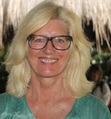Barbara Rachko's Blog, page 127
October 25, 2014
Q: You took classes at The Art League School in Alexandria, VA in the late eighties studying intensely with Lisa Semerad and Diane Tesler. How have these experiences impacted on the way you currently produce your artworks? By the way, I sometimes wonder
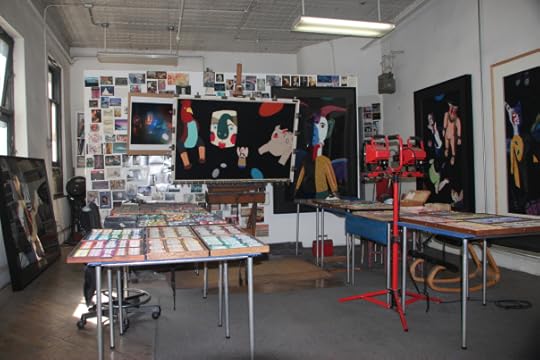
Barbara’s studio
A: From studying with Lisa and Diane I gained an excellent technical foundation and developed my ability to draw and depict just about anything in soft pastel. They were both extremely effective teachers and I worked hard in their classes. I probably got my work ethic from them. Without Diane and Lisa I doubt I would have gained the necessary skills nor the confidence to move to New York to pursue my art career.
Needless to say, I believe developing excellent technical skills is paramount. Artists can, and should, go ahead and break the rules later, but they won’t be able to make strong work, expressing what they want, without a firm foundation. Once you have the skills, you can focus on the things that really make your work come alive and speak to an appreciative audience.
Comments are welcome!
Filed under: An Artist's Life, Art in general, Art Works in Progress, Black Paintings, Creative Process, New York, NY, Painting in General, Pastel Painting, Photography, Studio, Working methods Tagged: ability, able, ahead, Alexandria_VA, alive, anything, appreciative, artist, artistic, artworks, audience, believe, break, career, certain, classes, confidence, creativity, currently, depict, developed, developing, Diane Tesler, disciplines, doubt, draw, effective, either, ethic, excellent, experience, expressing, extremely, firm, focus, formal, foundation, gained, impacted, intensely, kind, later, LIsa Semerad, make, move, necessary, needless, New York, paramount, probably, produce, pursue, rules, skills, soft pastel, sometimes, speak, stifle, strong, Studio, studying, teachers, technical, The Art League School, things, think, training, want, without, wonder, work, young








Q: You took classes at The Art League School in Alexandria, VA in the late eighties studying intensely with Lisa Semerad and Diane Tesler. How have these experiences impacted on the way you currently produce your artworks? By the way, I sometimes wonder

Barbara’s studio
A: From studying with Lisa and Diane I gained an excellent technical foundation and developed my ability to draw and depict just about anything in soft pastel. They were both extremely effective teachers and I worked hard in their classes. I probably got my work ethic from them. Without Diane and Lisa I doubt I would have gained the necessary skills nor the confidence to move to New York to pursue my art career.
Needless to say, I believe developing excellent technical skills is paramount. Artists can, and should, go ahead and break the rules later, but they won’t be able to make strong work, expressing what they want, without a firm foundation. Once you have the skills, you can focus on the things that really make your work come alive and speak to an appreciative audience.
Comments are welcome!
Filed under: An Artist's Life, Art in general, Art Works in Progress, Black Paintings, Creative Process, New York, NY, Painting in General, Pastel Painting, Photography, Studio, Working methods Tagged: ability, able, ahead, Alexandria_VA, alive, anything, appreciative, artist, artistic, artworks, audience, believe, break, career, certain, classes, confidence, creativity, currently, depict, developed, developing, Diane Tesler, disciplines, doubt, draw, effective, either, ethic, excellent, experience, expressing, extremely, firm, focus, formal, foundation, gained, impacted, intensely, kind, later, LIsa Semerad, make, move, necessary, needless, New York, paramount, probably, produce, pursue, rules, skills, soft pastel, sometimes, speak, stifle, strong, Studio, studying, teachers, technical, The Art League School, things, think, training, want, without, wonder, work, young








October 22, 2014
Pearls from artists* # 114
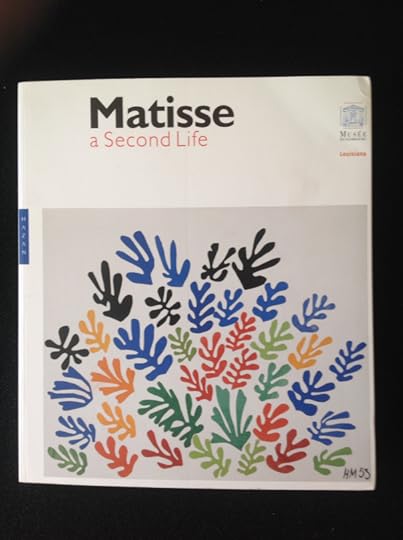
Catalogue of Matisse’s late work
* an ongoing series of quotations – mostly from artists, to a rtists – that offers wisdom, inspiration, and advice for the sometimes lonely road we are on.
These paper cut-outs have their very pure existence, although they escape from your hands, from your scissors. Their paper matter with the fine play of light on their flexibility, the physical aspect of this flexibility, all combine to make something miraculous which loses its essence when it is placed flat. But it retains its essence when it is fastened to the wall with pins by Lydia. The paper then keeps the life I am talking about and undergoes incessant changes.
Matisse: A Second Life, 2005 Editions Hazan, James Mayor translator of the English version
Comments are welcome!
Filed under: An Artist's Life, Art in general, Creative Process, Inspiration, Pearls from Artists, Photography, Quotes, Working methods Tagged: "Matisse: A Second Life", "Pearls from Artists", aspect, catalogue, changes, combine, cut-outs, Editions Hazan, English, escape, essence, existence, fastened, fine, flat, flexibility, hands, incessant, James Mayor, keeps, late, life, light, loses, make, matter, miraculous, paper, physical, pins, placed, play, pure, retains, scissors, something, talking, translator, undergoes, version, wall, work








October 18, 2014
Q: How did you happen to have a photograph published in The Wall Street Journal?
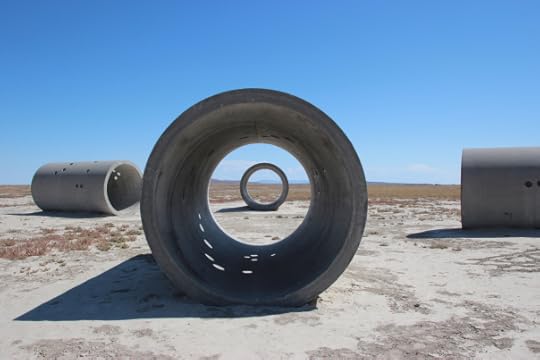
Sun Tunnels by Nancy Holt
A. That is a long story. To get far away from New York for the ten-year anniversary of 9/11, my friend, Donna Tang, and I planned a two-week road trip to see land art sites in Arizona, New Mexico, Utah, and Colorado. (Donna did excellent research).
We hoped for a private tour of Roden Crater with James Turrell, which is not easy to arrange. I had also invited my friend Ann Landi, an art critic and arts writer, to join us, hoping she might get an interview with Turrell and write an article for Artnews. Turrell has been working on Roden Crater for 30+ years so Ann was interested in seeing it too! Ann contacted Turrell’s gallery – Gagosian – but they later relayed Turrell’s refusal.
We were planning to see other land art sites. As an alternative to Roden Crater and Turrell, Ann pitched a story to The Wall Street Journal about Sun Tunnels and Nancy Holt (Robert Smithson’s wife, who as the only woman in the land art movement, has never been given her due). The Journal said yes, so Ann made plans to join Donna and me in Salt Lake City.
The three of us visited Sun Tunnels, Spiral Getty, and other sites together. Ann had a brand new point-and-shoot camera that she hadn’t yet learned how to use. I always take lots of photos whenever I travel. After we returned home, I sent Ann a few images and she asked permission to submit them with her article. I was thrilled when The Wall Street Journal requested JPEGs. It was the first time I’ve had a photograph published in a major newspaper.
Comments are welcome!
Filed under: An Artist's Life, Art in general, Photography, Travel Tagged: "The Wall Street Journal", 9/11, alternative, always, Ann Landi, anniversary, Arizona, arrange, art, article, ARTnews, camera, Colorado, critic, Donna Tang, easy, excellent, first, friend, Gagosian, gallery, given, happen, hoped, hoping, images, interested, interview, invited, James Turrell, join, JPEGs, land art, later, learned, major, movement, Nancy Holt, New Mexico, New York, newspaper, only, permission, photograph, photos, pitched, pitcheed, planned, planning, plans, point-and-shoot, private, published, publsihed, refusal, relayed, requested, research, road trip, Robert Smithson, Roden Crater, Salt Lake City, seeing, sent, sites, Spiral Getty, story, submit, Sun Tunnels, thrilled, time, together, tour, travel, Utah, wife, woman, working, write








October 15, 2014
Pearls from artists* # 113
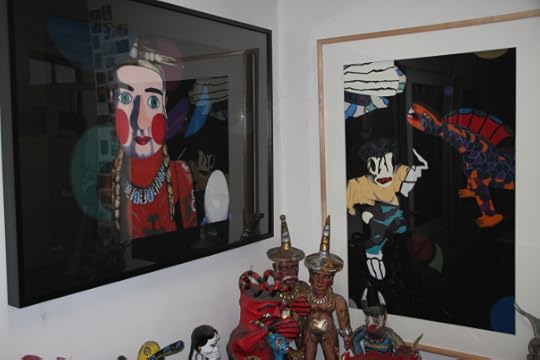
Studio corner
* an ongoing series of quotations – mostly from artists, to a rtists – that offers wisdom, inspiration, and advice for the sometimes lonely road we are on.
In Amsterdam I saw a striking still life painted by Rembrandt van Rijn suspended above a glass case that contained the same objects that he used as a model for the picture. The contrast between what felt like a drab collection of random objects in the case and the stunning luminescent painting that seemed imbued with nothing less than intense energy and life gave me pause and clarified something I had been thinking about. I had been thinking about the power of art to transform the frustrations and irritations of daily life into a realm of grace and to embody, through arrangement, composition, light, color and shade, nothing less than the secret elixir of life itself.
We encounter daily frustrations, irritations, and obstacles. Perhaps we feel hampered and limited by our hit-and-miss upbringing, our apparent limitations and our imperfect ongoing circumstances. And yet Rembrandt’s still life painting demonstrates that it is within our power to transform the random, the everyday, the frustrating and the prosaic into an arrangement instilled with grace and poetry. Is it the arrangement of these objects that lends such a spiritual quality to the painting? Is it the sensation of light captured upon canvas? How did Rembrandt transform the quotidian into an uplifting vision of life?
Anne Bogart in What’s the Story: Essays about art, theater, and storytelling
Comments are welcome!
Filed under: An Artist's Life, Art in general, Black Paintings, Creative Process, Inspiration, Painting in General, Pastel Painting, Pearls from Artists, Photography, Quotes, Studio, Working methods Tagged: "What's the Story: Essays about art theater and storytelling, about, Amsterdam, Anne Bogart, apparent, arrangement, art, between, canvas, captured, case, circumstances, clarified, collection, color, composition, contained, contrast, daily, demonstrates, drab, elixir, embody, encounter, energy, everyday, felt, filled, frustrating, frustrations, glass, grace, hampered, hit-and-miss, imbued, imperfect, intense, irritations, itself, lends, life, light, limitations, limited, luminescent, model, nothing, objects, obstacles, ongoing, painted, painting, pause, perhaps, picture, poetry, power, prosaic, quality, quotidian, random, realm, Rembrandt van Rijn, secret, sensation, shade, something, spiritual, still life, striking, stunning, suspended, thinking, transform, upbringing, uplifting, vision, within








October 11, 2014
Q: What’s on the easel today?
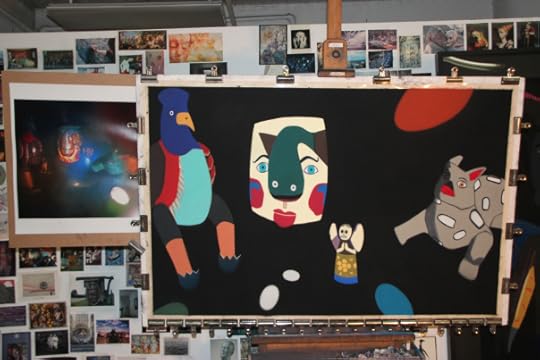
Work in progress
A: I continue to work on “Motley,” a large pastel-on-sandpaper painting that features two folk art pieces I found in Mexico City in March.
Comments are welcome!
Filed under: An Artist's Life, Art Works in Progress, Black Paintings, Creative Process, New York, NY, Pastel Painting, Photography, Studio, Working methods Tagged: "Motley", continue, easel, features, folk art, March, Mexico City, painting, pastel-on-sandpaper, pieces, progress, today, work








October 8, 2014
Pearls from artists* # 112
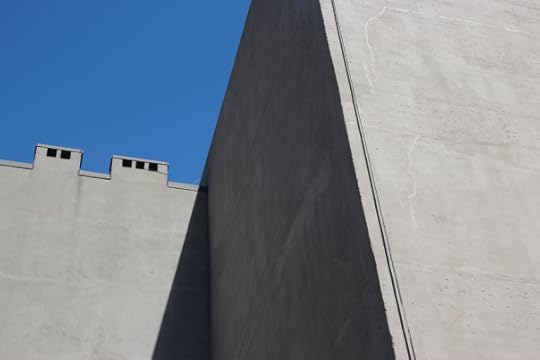
New York, NY
* an ongoing series of quotations – mostly from artists, to a rtists – that offers wisdom, inspiration, and advice for the sometimes lonely road we are on.
If the goal of art is Beauty and if we assume that the goal is sometimes reached, even if always imperfectly, how do we judge art? Basically, I think, by whether it reveals to us important Form that we ourselves have experienced but to which we have not paid adequate attention. Successful art re discovers Beauty for us.
One standard, then, for the evaluation of art is the degree to which it gives us a fresh intimation of Form. For a picture to be beautiful it does not have to be shocking, but it must in some significant respect be unlike what has preceded it (this is why an artist cannot afford to be ignorant of the tradition within his medium). If the dead end of the romantic vision is incoherence, the failure of classicism, which is the outlook I am defending, is the cliché, the ten thousandth camera-club imitation of a picture by Ansel Adams.
Robert Adams in Beauty in Photography
Comments are welcome!
Filed under: An Artist's Life, Art in general, Creative Process, Inspiration, New York, NY, Pearls from Artists, Photography, Quotes, Working methods Tagged: "Beauty in Photography", adequate, afford, always, Ansel Adams, art, artist, assume, attention, basically, beautiful, beauty, camera-club, classicism, cliche, dead end, defending, degree, evaluation, experienced, failure, form, fresh, goal, ignorant, imitation, imperfectly, important, incoherence, intimation, judge, medium, New York, ourselves, outlook, paid, pearls from artists, picture, preceded, reached, rediscovers, respect, reveals, Robert Adams, romantic, shocking, significant, sometimes, standard, successful, ten thousandth, think, tradition, unlike, vision, whether








October 4, 2014
Q: When you left the Navy you worked on commission as a portrait artist. Why don’t you accept commissions now?
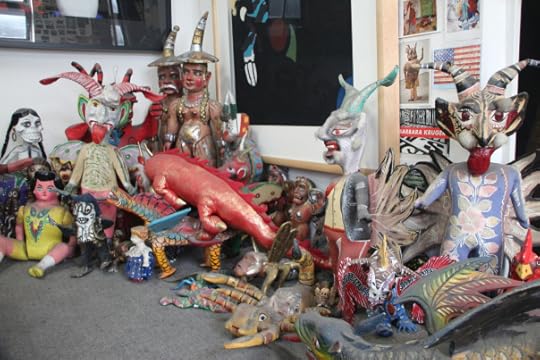
Barbara’s studio
A: As I have often said, I left the active duty Navy in 1989, but stayed in the Reserves. The Reserves provided a small part-time income and the only requirement was that I work one weekend a month and two weeks each year. Plus, I could retire after 13 more years and receive a pension. (In 2003 I retired from the Navy Reserve as a Commander). The rest of the time I was free to pursue my studio practice.
For a short time I made a living making commissioned photo-realist portraits in soft pastel on sandpaper. However, after a year I became very restless. I remember thinking, “I did not leave a boring job just to make boring art!” I lost interest in doing commissions because what I wanted to accomplish personally as an artist did not coincide with what portrait clients wanted. I finished my final portrait commission in 1990 and never looked back.
To this day I remain reluctant to accept a commission of any kind. So I am completely free to paint whatever I want, which is the only way to evolve as a serious, deeply committed artist.
Comments are welcome!
Filed under: An Artist's Life, Art in general, Creative Process, Inspiration, New York, NY, Painting in General, Pastel Painting, Photography, Quotes, Studio, Working methods Tagged: accept, accomplish, active duty, art, artist, became, boring, clients, coincide, Commander, commission, commissioned, committed, completed, completely, deeply, evolve, free, income, interest, job, left, living, looked, lost, making, month, Navy, paint, part-time, pension, personally., photo-realist, portrait, provided, pursue, receive, reluctant, remain, remember, requirement, Reserves, restless, retire, said, serious, small, soft pastel on sandpaper, stayed, Studio, studio practice, thinking, want, wanted, weekend, whatever, work, years








October 1, 2014
Pearls from artists* # 111
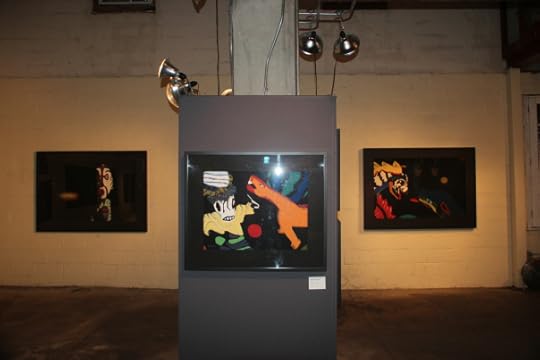
Perkins Center for the Arts, Collingswood, NJ
It is very difficult to describe the creative experience in such a way that it would cover all cases. One of the essentials is the variety with which one approaches any kind of artistic creation. It doesn’t start in any one particular way and it is not always easy to say what gets you going.
I’ve sometimes made the analogy with eating. Why do you eat? You’re hungry. You are sort of in the mood to eat, and if you are in the mood to eat, the food tastes better; you’re more interested in what you’re eating. The whole experience is more “creative.” It’s the hunger that stimulates you to eat. It’s the same thing in art; except that, in art, the hunger is the need for self-expression.
How does it come about that you feel hungry? You don’t know, you just feel hungry. The juices are working, and suddenly you are aware of the fact that you want a piece of bread and butter. It’s about the same in art. If you pass your life in creating works of art in one field or another, you recognize the “hunger” signs and you are quick to take advantage of them, if they’re accompanied by ideas. Sometimes, you have the hunger and you don’t have any ideas; there’s no bread in the house. It’s as simple as that.
AAron Copland in The Creative Experience: Why and How Do We Create?, Stanley Rosner and Lawrence E. Abt, editors
Comments are welcome!
Filed under: An Artist's Life, Art in general, Art Works in Progress, Black Paintings, Creative Process, Inspiration, New York, NY, Pastel Painting, Pearls from Artists, Photography, Quotes, Studio, Working methods Tagged: "The Creative Experience: Why and How Do We Create?", Aaron Copland, about, accompanied, advantage n, always, analogy, another, approaches, art, artistic, aware, better, bread, butter, cases, Collingswood_NJ, cover, creating, creation, creative, describe, difficult, easy, eat, eating, editors, essentials, except, experience, fact, feel, field, food, going, house, hunger, hungry, ideas, interested, juices, kind, know, Lawrence E. Abt, mood, need, particular, pass, pearls from artists, Perkins Center for the Arts, piece, quick, recognize, same, self-expression, signs, simple, sometimes, sort, Stanley Rosner, start, stimulates, suddenly, tastes, thing, variety, want, whole, working, works








September 27, 2014
Q: How did you prepare yourself to change careers and work as a professional artist?
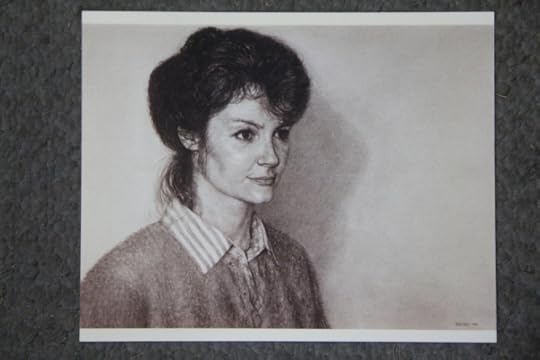
“Krystyn,” charcoal, 22″ x 30″, 1989
A: At the age of 33 I was a Lieutenant in the Navy, working as computer analyst at the Pentagon. I was very unhappy with my job. I began looking for something else to do and discovered The Art League School in Alexandria, VA. I enrolled in classes with Lisa Semerad, then spent the next two years developing my drawing skills using black and white media (charcoal, pencils, conte crayon, etc.).
After that I moved on to color media and began studying soft pastel with Diane Tesler. During this time I was still in the Navy, working the midnight shift at the Pentagon and taking art classes during the day. I was a very motivated student.
After three years or so I was getting quite proficient as an artist, entering local juried shows, winning prizes, garnering press coverage, etc. Prior to my career change, I worked hard to develop my portrait skills. I really didn’t know how I could make a living other than by making commissioned portraits. I volunteered to run a weekly life drawing class at The Art League School in Alexandria, VA, where I made hundreds of figure drawings using charcoal.
I spent a semester commuting between Washington, DC and New York to study artistic anatomy at the New York Academy of Art. I spent another semester studying gross anatomy with medical students at Georgetown University Medical School. Over time I became skilled at making photo-realistic portraits. In 1989 I resigned from the Navy and have worked full-time as a visual artist ever since.
Comments are welcome!
Filed under: An Artist's Life, Creative Process, Inspiration, Pastel Painting, Photography, Working methods Tagged: Alexandria_VA, artistic anatomy, black and white, career, change, charcoal, classes, color, commissioned, commuting, computer analyst, conte crayons, developing, Diane Tesler, drawing, enrolled, entering, figure drawings, full-time, garnering, Georgetown University Medical School, gross anatomy, juried shows, Krystyn, lieutenant, life drawing, LIsa Semerad, living, local, looking, media, midnight shift, motivated, Navy, New York, New York Academy of Art, pencils, Pentagon, photo-realistic, portrait, portraits, prepare, press coverage, prizes, professional, proficient, resigned, semester, skilled, skills, soft pastel, student, students, studying, The Art League School, unhappy, visual artist, volunteered, Washington_DC, winning, work









